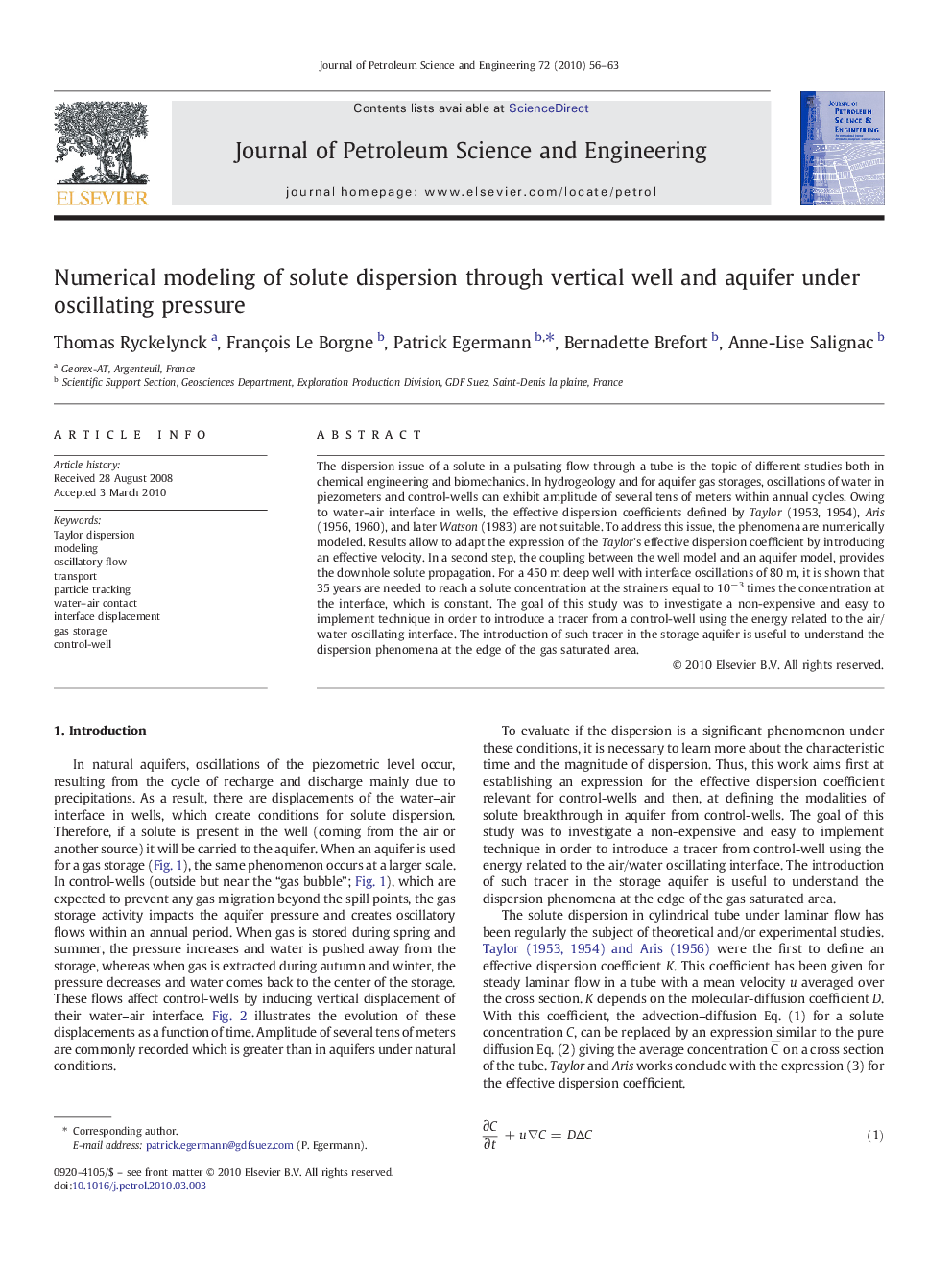| Article ID | Journal | Published Year | Pages | File Type |
|---|---|---|---|---|
| 1755755 | Journal of Petroleum Science and Engineering | 2010 | 8 Pages |
Abstract
The dispersion issue of a solute in a pulsating flow through a tube is the topic of different studies both in chemical engineering and biomechanics. In hydrogeology and for aquifer gas storages, oscillations of water in piezometers and control-wells can exhibit amplitude of several tens of meters within annual cycles. Owing to water-air interface in wells, the effective dispersion coefficients defined by Taylor (1953, 1954), Aris (1956, 1960), and later Watson (1983) are not suitable. To address this issue, the phenomena are numerically modeled. Results allow to adapt the expression of the Taylor's effective dispersion coefficient by introducing an effective velocity. In a second step, the coupling between the well model and an aquifer model, provides the downhole solute propagation. For a 450Â m deep well with interface oscillations of 80Â m, it is shown that 35Â years are needed to reach a solute concentration at the strainers equal to 10â3 times the concentration at the interface, which is constant. The goal of this study was to investigate a non-expensive and easy to implement technique in order to introduce a tracer from a control-well using the energy related to the air/water oscillating interface. The introduction of such tracer in the storage aquifer is useful to understand the dispersion phenomena at the edge of the gas saturated area.
Related Topics
Physical Sciences and Engineering
Earth and Planetary Sciences
Economic Geology
Authors
Thomas Ryckelynck, François Le Borgne, Patrick Egermann, Bernadette Brefort, Anne-Lise Salignac,
